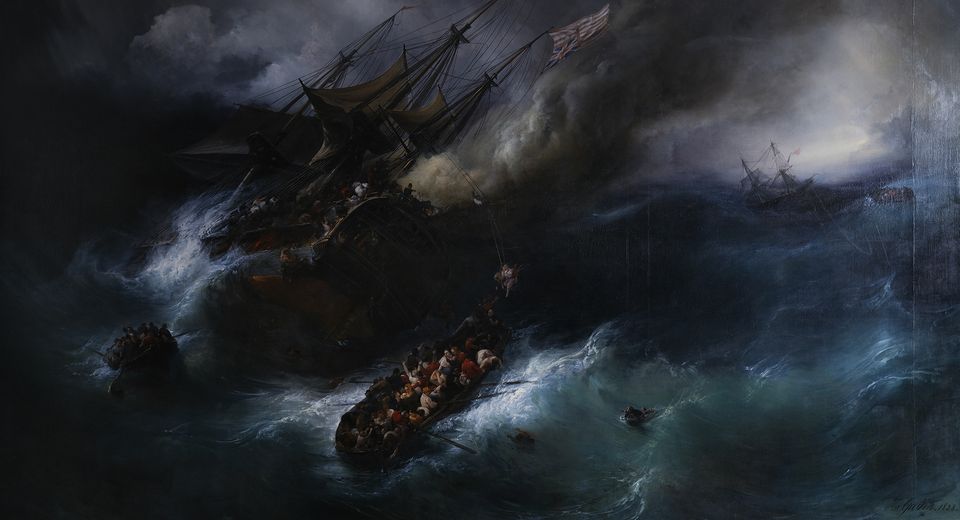The Kent fire, 1825
Paris
Deposit from the Department of Paintings, Musée du Louvre
The raging elements, a sinking ship, a fire on board - these were the inspirations for the talent and enthusiasm of the painter Théodore Gudin, who presented this large-scale composition at the Salon of 1828. The artist was only 26 years old, and he scored a huge success with this accidental shipwreck, which he depicted as a horrifying spectacle, plunging the viewer into the heart of the tumult.
The first Navy painter
Born in Paris in 1802, Théodore Gudin joined the American Navy at the age of seventeen after a short period at the Naval Academy. On his return to France, his experience as a sailor naturally led him towards seascapes and maritime scenes.
Gudin specialised in depicting shipwrecks and naval battles, and in 1830 he became the first artist to be appointed painter to the Royal Navy. Deeply affected by the accidental drowning of his brother, Théodore Gudin, alongside the Empress Eugénie, was one of the founders in 1865 of the Central Society for the Rescue of Shipwrecked Persons. His talent and closeness to the powers that be established his reputation, and earned him a commission on French naval history for the Musée de l'Histoire de France in Versailles.
An aesthetic of shock
On 28 February 1825, a British East India Company ship, the Kent, carrying more than 650 people, including around a hundred women and children, encountered a violent gale in the Bay of Biscay. During the storm, a raging fire broke out on board, threatening to reach the powder magazine. The English brig Cambria, alerted by the Kent distress flag, managed to get close to the ship, but transhipment operations were complicated by the storm and the shipwreck caused many casualties.
Théodore Gudin drew his inspiration from the tragedy for this imposing canvas, which was presented at the Salon of 1828 and immediately won him huge success. The meticulous depiction of the ship in distress, the composition organised in long diagonals, the power of the raging sea and the clouds that merge with the smoke of the fire are all elements that characterise his work. The waves that capsize the ship are treated as impastos, giving them an almost transparent appearance. Finally, the large scale of the disaster scene, the impression of the distraught shipwrecked crew being crowded together, and the attention to detail given to the victims in the water, arouse intense emotion in the viewer.
Collection highlight
Discover the must-see works at the Musée national de la Marine.

